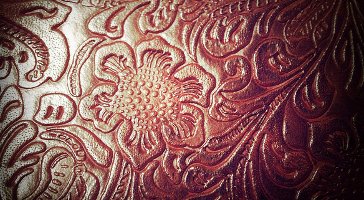Lush goes to Turkey to talk to Hassan Kinaci of Sebat Ltd, the producer of their rose absolute.
See also: verbena, lavender #1, lavender #2 + immortelle, vetiver, neroli #1, neroli #2, monoi (tiare), sandalwood, ylang.
Posted by Robin on Leave a Comment
Lush goes to Turkey to talk to Hassan Kinaci of Sebat Ltd, the producer of their rose absolute.
See also: verbena, lavender #1, lavender #2 + immortelle, vetiver, neroli #1, neroli #2, monoi (tiare), sandalwood, ylang.
Posted by Robin on 2 Comments
From L’Occitane, two short films about growing and processing verbena (verveine). The first is from Corsica; below the jump, another from an organic operation in Provence.
See also: lavender #1, lavender #2 + immortelle, vetiver, neroli #1, neroli #2, monoi (tiare), sandalwood, ylang.
Posted by Angela on 199 Comments

Few fragrances marry butch and elegance as well as a good leather. For the most part, leather is easy to smell in perfume. Think of Caron Tabac Blond, for instance. It’s a snootful of sweet, oily leather. But sometimes leather weaves itself more cleverly into a fragrance and, if you’re expecting a true saddle leather, might not be obvious at first. Bottega Veneta is an example of a leather fragrance with less blatant, but still very present, leather note.
I thought it would be helpful to run through some of the different ways leather can star in a fragrance — a sort of “Leather 101.”
Birch tar-loaded “Russian” leather: This is what most people think of when they think “leather perfume.” Birch tar on its own is smoky, burnt, and leathery as a slab of oil-rubbed hide. It’s a powerful note. Sometimes it’s left seemingly untouched in a strong leather fragrance (Knize Ten), and sometimes it’s complemented by something equally assertive (the sharp galbanum in Bandit). Examples include Caron Tabac Blond…
Posted by Aleta on 23 Comments

Who would think, then, that such fine ladies and gentlemen should regale themselves with an essence found in the inglorious bowels of a sick whale! Yet so it is. — Herman Melville, Moby Dick
Over the years, perfumers have had some wonderfully repugnant substances in their arsenal. Some, like jasmine and oakmoss, look picturesque in nature but can waltz into a perfume with manure or pond scum caked on their boots. Others have unseemly origins, like oudh produced by fungus-infected trees and various musks harvested from animals’ rear ends. Ambergris is a bit of both. It is produced in the bowels of just one percent of sperm whales from indigestible squid parts and feces, and expelled (sometimes fatally1) to the ocean’s surface, where it ideally ages for a few years before washing ashore. It almost always smells a bit like barnyard. Like oakmoss and animal musk, it seems to belong to a past age of perfumery. But ambergris has a mystery all its own, a treasure from the sea that can bring its finder a small fortune, an olfactory enigma that is difficult to describe and impossible to create in a lab.2
Molecular biologist Christopher Kemp first heard of ambergris in 2008 when a huge block of ambergris was thought to have washed up in New Zealand, where he was living at the time…
Posted by Robin on 4 Comments
Lush visits Nabeul, Tunisia to watch the harvesting and distilling of orange blossoms into neroli and orange blossom absolute.
See also: lavender version 1 + immortelle, lavender version 2, monoi, vetiver, sandalwood, ylang.